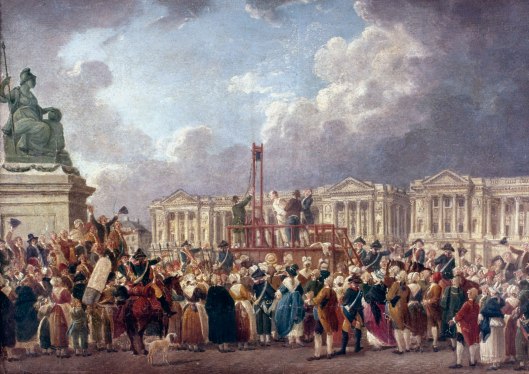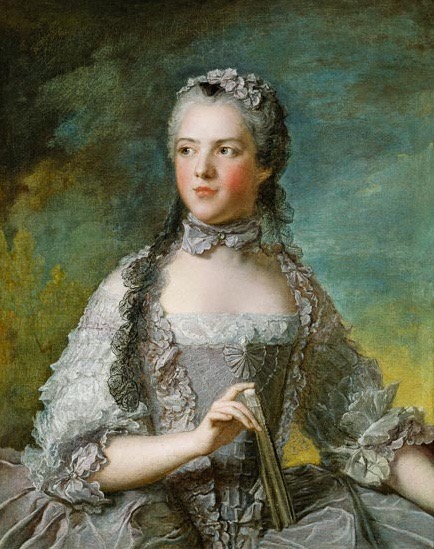Tags
Battle of Waterloo, Count of Artois, Holy Roman Emperor Franz II, King Louis XVIII of France, Napoléon of France, Prince Charles-Philippe, Princess Marie-Thérèse de Bourbon of France
In late August 1795, Marie-Thérèse was finally told what had happened to her family, by Madame Renée de Chanterenne, her female companion. When she had been informed of each of their fates, the distraught Marie-Thérèse began to cry, letting out loud sobs of anguish and grief.
It was only once the Terror was over that Marie-Thérèse was allowed to leave France. She was liberated on December 18, 1795, on the eve of her seventeenth birthday, exchanged for prominent French prisoners (Pierre Riel de Beurnonville, Jean-Baptiste Drouet, Hugues-Bernard Maret, Armand-Gaston Camus, Nicolas Marie Quinette, and Charles-Louis Huguet de Sémonville) and taken to Vienna, the capital city of her cousin, the Holy Roman Emperor Franz II, and also her mother’s birthplace.
Exile (1795–1814)
Marie-Thérèse arrived in Vienna on January 9, 1796, in the evening, twenty-two days after she had left the Temple.
She later moved to Mitau, Courland (now Jelgava, Latvia), where her father’s eldest surviving brother, Prince Louis Stanislaus, Count of Provence, lived as a guest of Emperor Paul I of Russia. He had proclaimed himself King of France as Louis XVIII after the death of Marie-Thérèse’s brother. With no children of his own, he wished his niece to marry her cousin, Louis-Antoine, Duke of Angoulême, son of his brother, Prince Charles, Count of Artois. Marie-Thérèse agreed.
Prince Louis-Antoine was a shy, stammering young man. His father tried to persuade King Louis XVIII against the marriage. However, the wedding took place on June 10, 1799 at Jelgava Palace (modern-day Latvia). The couple had no children.
Life in Britain
The French Royal Famiy moved to Great Britain, where they settled at Hartwell House, Buckinghamshire, while her father-in-law spent most of his time in Edinburgh, where he had been given apartments at Holyrood Palace.
The long years of exile ended with the abdication of Emperor Napoleon I in 1814, and the first Bourbon Restoration, when King Louis XVIII ascended the throne of France, twenty-one years after the death of his brother King Louis XVI.
Bourbon Restoration (1814–1830)
King Louis XVIII attempted to steer a middle course between liberals and the Ultra-royalists led by Prince Charles Philippe, Count of Artois. He also attempted to suppress the many men who claimed to be Marie-Thérèse’s long-lost younger brother, King Louis XVII. Those claimants caused the princess a good deal of distress.
Marie-Thérèse found her return to France emotionally draining and she was distrustful of the many Frenchmen who had supported either the Republic or Empire. She visited the site where her brother had died, and the Madeleine Cemetery where her parents were buried. The royal remains were exhumed on January 18, 1815 and re-interred in the Basilica of Saint-Denis, the royal necropolis of France, on January 21,!1815, the 22nd anniversary of King Louis XVI’s execution.
In March 1815, Napoleon returned to France and rapidly began to gain supporters and raised an army in the period known as the Hundred Days. King Louis XVIII fled France, but Marie-Thérèse, who was in Bordeaux at the time, attempted to rally the local troops.
The troops agreed to defend her but not to cause a civil war with Napoleon’s troops. Marie-Thérèse stayed in Bordeaux despite Napoleon’s orders for her to be arrested when his army arrived. Believing her cause was lost, and to spare Bordeaux senseless destruction, she finally agreed to leave. Her actions caused Napoleon to remark that she was “the only man in her family.”
After Napoleon was defeated at the Battle of Waterloo on June 18, 1815, the House of Bourbon was restored for a second time, by the Congress of Vienna, and King Louis XVIII returned to France.














